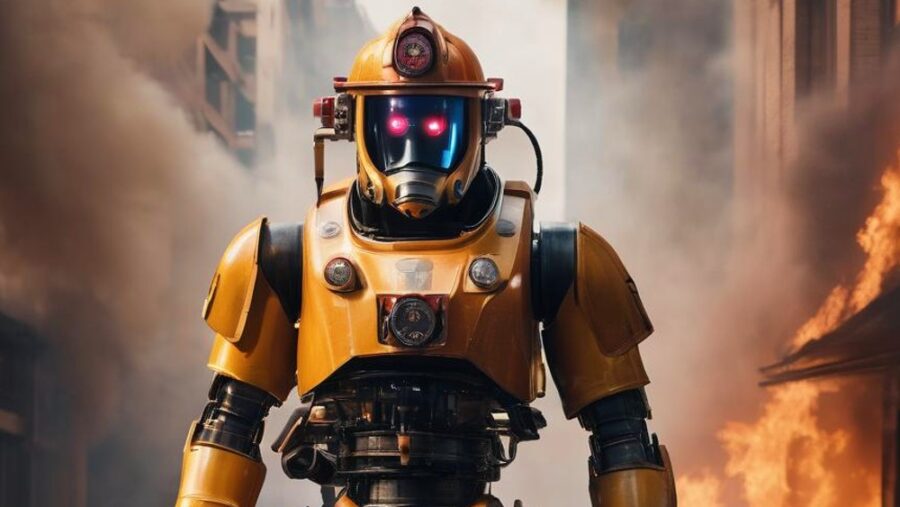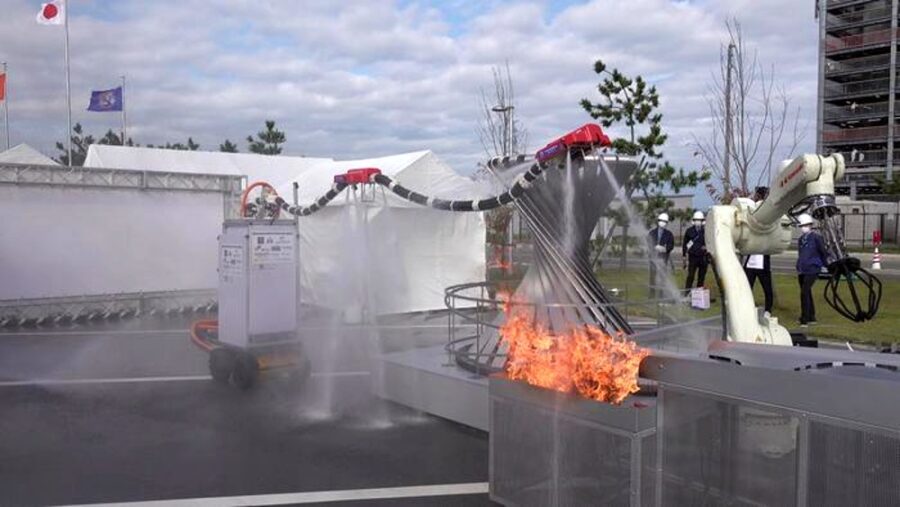Dragon Robot Firefighter Is Now A Real Thing

A team of Japanese researchers are in the process of developing a flying dragon robot firefighter. Measuring in at just under four meters, the dragon firefighter concept is still very much in the prototype phases, but the concept was proven at the World Robot Summit 2020 (WRS 2020). Using jet propulsion technology, this new development will allow firefighters to extinguish fires that are too dangerous for their human counterparts to approach.
Equipped with eight water jets, the device can easily change its shape and direction so it could safely extinguish hard-to-reach blazes.
The concept of a fire extinguishing dragon robot was first conjured up in 2016 under the guidance of Tohoku University professor, Satoshi Tadokoro, and his team of 11 researchers. During the robot’s development, the team worked with Japanese firefighters so they could know their exact needs.
This development phase led to the creation of a dragon-shaped remote-controlled flying fire hose robot that can freely hover over a fire source while blasting it with jets of water from above.

The current iteration of the dragon robot has a number of promising features. Equipped with eight water jets, the device can easily change its shape and direction so it could safely extinguish hard-to-reach blazes. It’s also equipped with thermal imaging cameras so it could more easily locate fires that may not be visible to human fire fighters from their vantage point.
As for its water supply, the dragon robot connects to fire trucks with a supply tube that gives it access to 14,000 liters of water.
As the dragon robot further develops, we can expect to see better waterproofing, more sophisticated nozzle designs, and a stronger water flow from the nozzles.
The WRS 2020 demonstration not only highlighted the dragon robot’s potential, but also its weaknesses. One critical improvement that needs to be considered is the robot’s startup time. Once up and running, the dragon robot is able to successfully put out a fire, but when a building is engulfed in flames, every second counts.
Durability is another aspect to consider. Since the dragon robot only hovers two meters above the ground, it’s susceptible to fire damage. That is to say, the current iteration of the robot is unable to be used to put out back-to-back fires, as it will likely need to be repaired after each mission.
What’s more, the remote control technology for the dragon robot wasn’t ready to go ahead of its demonstration, so it was operated manually at the WRS 2020. But since the remote control technology has already been developed, it’s just a matter of installing it on future designs.
But setbacks aren’t necessarily a bad thing. Knowing where the system gets stressed allows researchers to improve the prototype. As the dragon robot further develops, we can expect to see better waterproofing, more sophisticated nozzle designs, and a stronger water flow from the nozzles.
If all goes according to plan, the dragon robot firefighter will be fully realized and implemented within 10 years. But since the blueprint has been published as Open Science, scientists around the world are free to develop the technology on their own terms should they feel so inclined. In other words, we may actually see this new technology develop even sooner than expected if the right team decides to take a crack at pushing the concept forward.
Source: Frontiers












